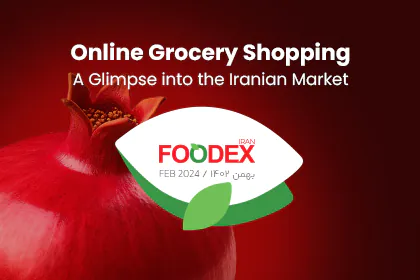Which Foods Are Healthy?
What we eat today shapes our health for tomorrow. If you aspire to run, dance, and enjoy life with your grandchildren at the age of 70, it’s essential to take eating healthy foods seriously. But which foods are considered healthy? How can we determine if we have a healthy lifestyle? If you care about your health and that of your loved ones and want to become more familiar with the characteristics of a healthy lifestyle, stay with us until the end of this article from Foodex Magazine.
Benefits of Consuming Healthy Foods
Following a healthy diet is a crucial part of our lives because it brings numerous benefits to the body. Protecting the heart from diseases, improving mood, maintaining strong and healthy bones, and overall well-being are all dependent on our eating habits:
Here are six of the most important benefits of consuming healthy foods:
1- Promotes Heart Health
Studies have shown that heart disease is one of the leading causes of death among adults. Currently, there are many concerns about high blood pressure, which can lead to heart attacks, strokes, and heart failure. The good news is that by changing our lifestyle, engaging in physical activity, and eating healthily, we can prevent up to 80% of premature heart diseases and strokes.
Eating healthy foods helps reduce blood pressure and, consequently, increases heart health. Consuming vegetables, fruits, whole grains, healthy fats, and high-quality proteins while reducing intake of processed foods high in fat, salt, and sugar ensures that your heart beats healthily for the love of your dear ones.
2- Reduces the Risk of Cancer
Cancer is currently one of the most common diseases of our time. The presence of free radicals in the body increases the risk of cancer. Fortunately, by consuming foods rich in antioxidants, we can combat free radicals and reduce the likelihood of developing cancer. Many fruits, vegetables, nuts, and legumes are rich in antioxidants, and including them in our diet decreases the risk of cancer.
3- Improves Mood
Numerous studies have highlighted the relationship between nutrition and mood. For example, foods with a high glycemic index, such as sweets, chocolates, sodas, white bread, and biscuits—can increase symptoms of depression and feelings of lethargy. In contrast, consuming whole grains, fruits, and vegetables with a lower glycemic index does not exacerbate symptoms of depression.
4- Enhances Memory Function
Maintaining a healthy lifestyle and consuming beneficial foods helps improve brain function. Foods that include the following compounds can prevent dementia and cognitive decline:
Vitamins D, C, and E
Omega-3 fatty acids
Flavonoids and polyphenols
5- Aids in Weight Management
Consuming healthy food is essential for weight management. A healthy lifestyle mainly involves consuming quality foods like fruits, vegetables, and unprocessed items—which generally have fewer calories—helping individuals naturally avoid excess weight gain.
By eating healthy foods without the need for strict dieting or excessive calorie counting, you can maintain your ideal weight. Fiber is particularly important for weight control. It not only creates a longer-lasting feeling of fullness but also helps improve bowel function. Additionally, a diet rich in fiber, protein, and healthy fats aids in weight loss.
6- Raising Healthier Children
Children often imitate the behaviors of adults around them. Therefore, if raising a healthy and strong generation is important to you, take lifestyle modification seriously. Parents who value healthy eating habits and exercise pass these behaviors on to the next generations.
Identifying Healthy and Unhealthy Foods
Answering the question of which foods are healthy is not difficult. Whenever you prepare a meal, consider the following features to determine whether the food you’re eating is healthy.
Processed vs. Unprocessed
Minimizing the consumption of processed foods can significantly improve your health. Processing includes any action taken to change the taste or preserve foods. While some processing, like cooking, is necessary, opting for grilling, steaming, or boiling over frying can make meals healthier. Reducing intake of industrially processed foods and incorporating homemade meals, fruits, nuts, and vegetables can decrease your consumption of unhealthy additives.
Sugar and Salt Content
High levels of sugar and salt make foods less healthy. Moderation is key to avoiding risks like high blood pressure and heart diseases. Limit your intake of sugary snacks and opt for natural sweeteners like honey, dates, and raisins when you need a sweet fix.
Fiber Content
Fiber plays an essential role in the body. Found in vegetables and whole grains, fiber helps you stay full longer and aids digestive health. If you’re aiming to lose weight, consuming fiber-rich foods can accelerate your progress.
Fat Content
A balanced diet includes healthy fats. These fats keep you satiated longer and can reduce cravings for sweets. When consumed in moderation, healthy fats like those found in olive oil, sesame oil, egg yolks, fish, and nuts can boost metabolism.
Be cautious of foods labeled “low-fat,” as they may contain added sugars and salts to compensate for reduced fat content. Always read labels carefully.
Environmental Impact
Another criterion for determining the healthiness of foods is their environmental impact. Foods that require fewer resources and cause less harm during production, preparation, and consumption are considered healthier for the planet. Consuming less processed foods and reducing meat and dairy intake in favor of fruits and vegetables can lessen your environmental footprint.
For those concerned about the environment, consider reading articles on the relationship between diet and ecological health.
Characteristics of a Healthy Diet
Wondering if you maintain a healthy diet? If the following habits are part of your lifestyle, you’re on the right track.
Planned Meals
Eating anything at any time won’t lead to a healthy and fit body. Planning your meals helps prevent overeating and weight gain, improving overall health. While you don’t need an overly strict schedule, consuming meals at regular intervals can boost your metabolism.
Regular Consumption of Fruits and Vegetables
Busy lifestyles often lead to neglecting fruits and vegetables. Here are some tips to increase your intake:
Breakfast: Start your day with a banana-strawberry smoothie or add onions and bell peppers to your omelet. In warmer seasons, enjoy fresh cucumbers and tomatoes with bread and cheese.
Lunch: Pack some chopped lettuce or herbs to accompany your meal at work.
Snacks: Prepare a plate of assorted fruits, vegetables, and nuts to enjoy while watching your favorite show.
Dinner: Occasionally opt for salads made with your favorite vegetables, legumes, and proteins. Simple options like bread and cheese with herbs or cucumber and tomato are healthy and satisfying.
Setting Boundaries
Don’t fear your favorite high-calorie or fatty foods. Balance is crucial. Mental health is just as important as physical health, and you deserve to enjoy your favorite treats occasionally without guilt. Establish rules for yourself—for example, reward yourself with a favorite food after a week of healthy habits.
Avoid categorizing foods as strictly “good” or “bad.” In a balanced diet, all foods—even chocolate cake, ice cream, and pizza—can have a place when consumed in moderation.
Variety in Food Choices
Ensure you’re consuming all food groups daily: fruits, vegetables, grains, proteins, and fats. Avoid completely eliminating any group and include nutritious options like whole grains, dairy, fish, poultry, lean meats, and healthy fats in your meals.
Enjoying Your Food
Eating is one of life’s greatest pleasures. Practice mindful eating by focusing on your meal, chewing slowly, and savoring each bite.
Final Thoughts
A healthy diet is essential for weight management and overall well-being. We’ve discussed the benefits of a healthy lifestyle and how you can adopt healthier eating habits. What strategies do you use to stay healthy? Share your experiences with us.
Frequently Asked Questions
What are the characteristics of healthy food?
A healthy diet includes consuming a variety of foods that provide essential nutrients for maintaining health and vitality. These nutrients include proteins, carbohydrates, fats, water, vitamins, and minerals.
Which diets should we avoid?
Avoid diets that focus only on a few foods or specific food groups, such as water diets, grapefruit diets, strict vegetarian and raw food diets, and many low-carb diets. Diets that completely eliminate certain food groups can harm your body.
What are high-quality foods?
High-quality foods are unrefined and minimally processed, such as vegetables and fruits, whole grains, healthy fats, and wholesome protein sources.
References
Harvard T.H. Chan School of Public Health – Healthy Eating Plate & Healthy Eating Pyramid
World Health Organization (WHO) – Healthy Diet
American Heart Association – Healthy Eating
Mayo Clinic – Nutrition and Healthy Eating
Academy of Nutrition and Dietetics – Eat Right
By Sougand Safari
Head of Content Department
Foodex Iran































